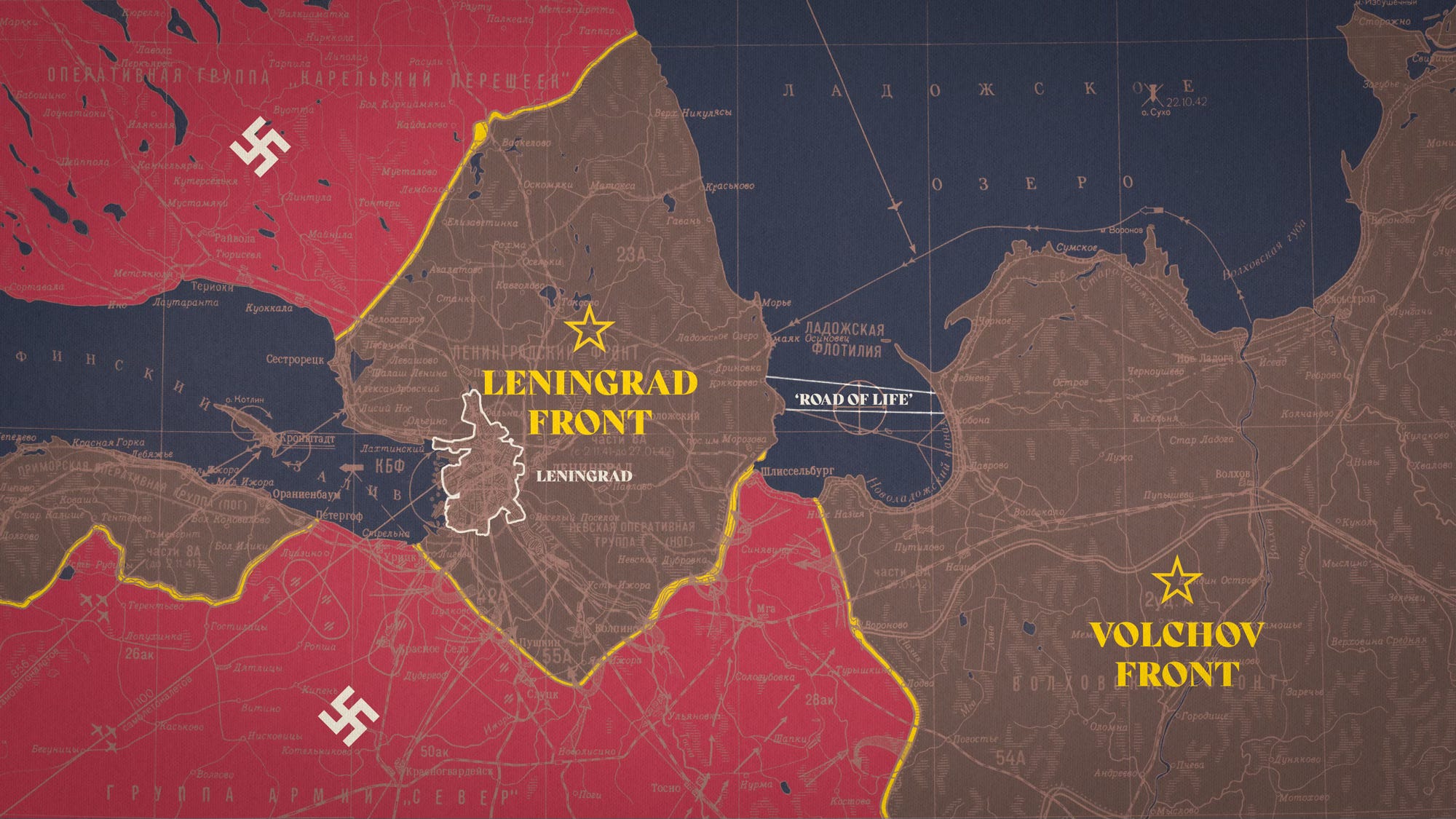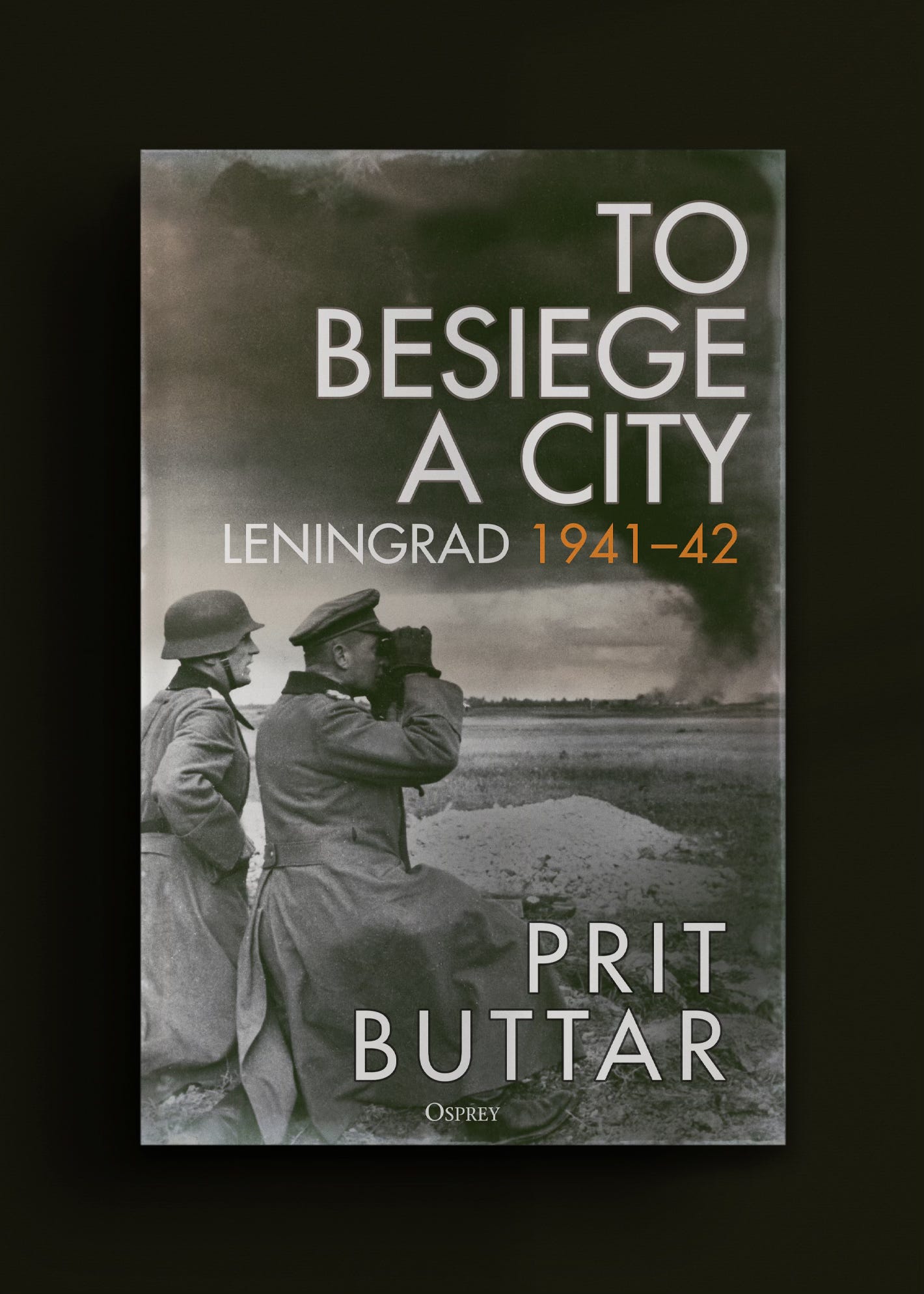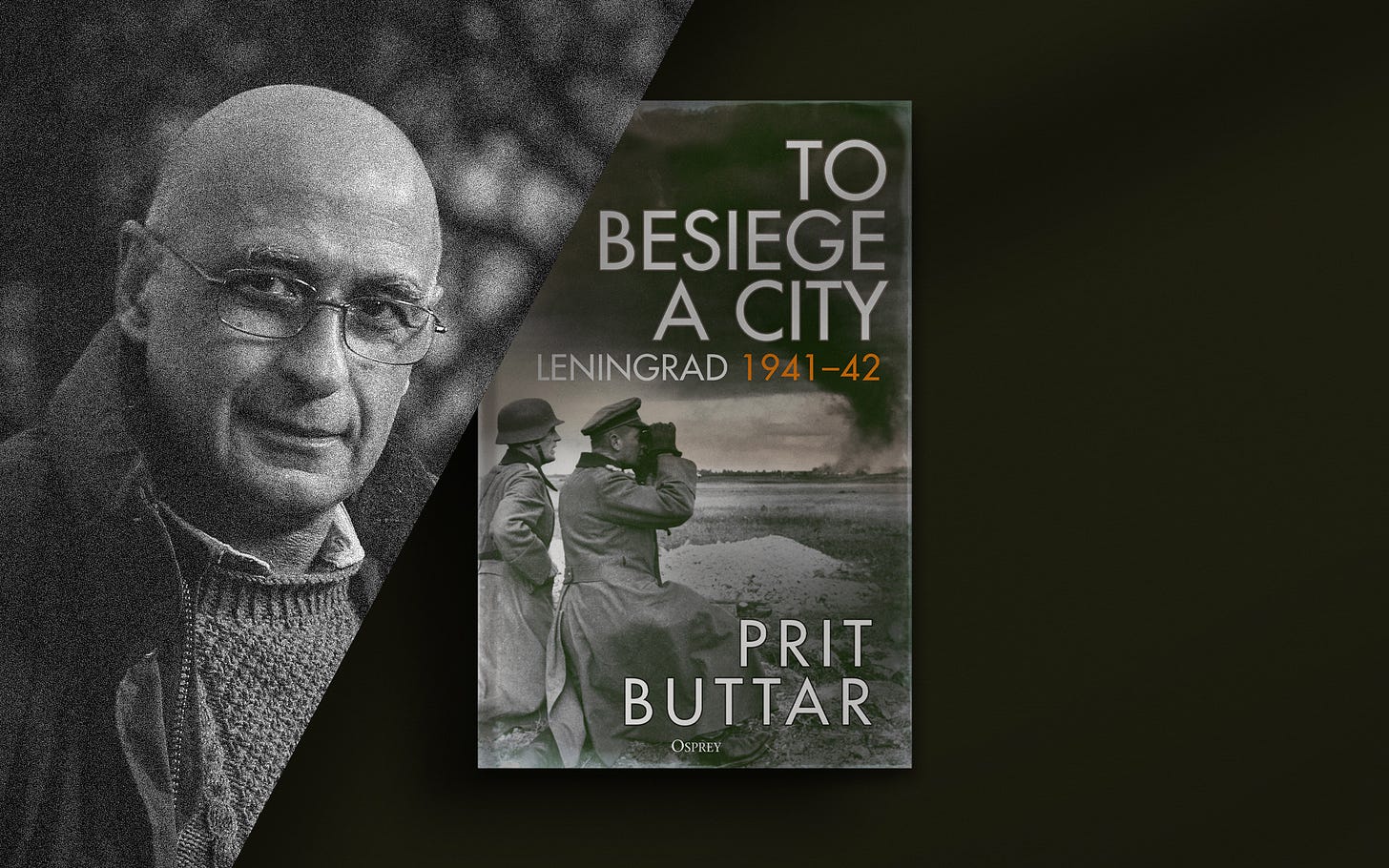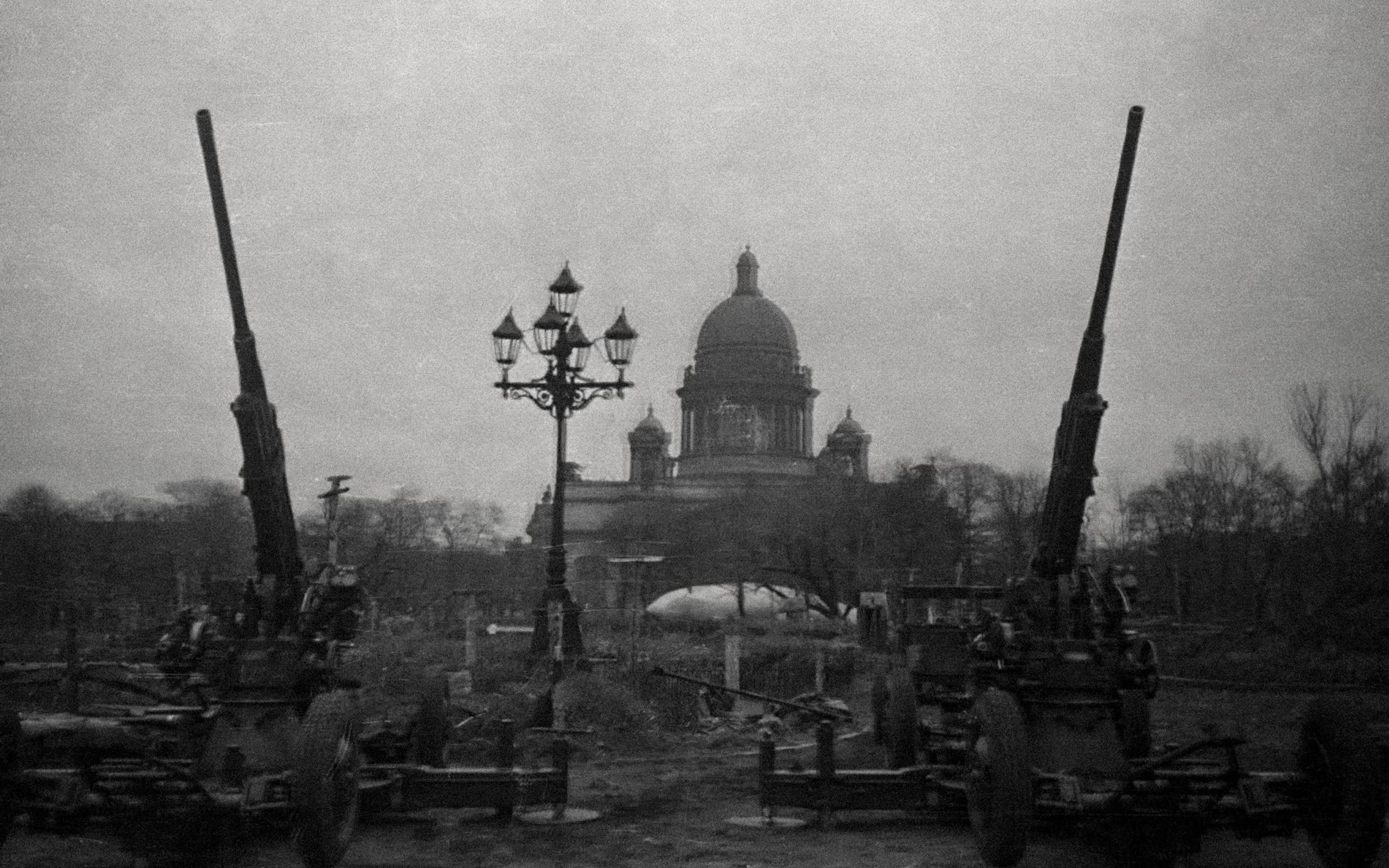
For almost 900 perilous days during the Second World War, Leningrad was surrounded by Nazi forces. Its remarkable survival has become a celebrated moment in Russian history, but the human cost was vast.
Prit Buttar, author of To Besiege a City, looks back at this history and he evaluates how stories about the siege have passed into national memory.
The popular memory of the Second World War is of a conflict full of modernity. Movie footage from the era shows aircraft and tanks, the huge industrial resources harnessed by the combatants, and eventually the advent of the atomic age. But for 900 days, the city of Leningrad – formerly St Petersburg and Petrograd – endured a siege that was perhaps more familiar to people of preceding centuries. The battle lines around the second largest city of the Soviet Union remained almost stationary throughout this period, with huge artillery being brought forward by the Germans in their attempts to destroy Leningrad.
But this comparison with earlier sieges is misleading. The use of blockade and starvation is as old as siege warfare, and is a highly effective means for an attacking army to wear down the ability of the garrison to resist, either forcing it to surrender or rendering it too weak to defend. In the case of Leningrad, the nature of the siege was more in keeping with the darker aspects of the Second World War and the widespread genocidal killing that it brought.
Hitler’s objective in invading the Soviet Union was not to seize territory or to impose a more pliant government on a neighbouring nation; the war was intended to be the start of a project that would see the complete destruction of the Soviet state, and the death of millions of its inhabitants. In order to release agricultural produce for use in Germany and elsewhere in Europe, it was necessary for the urban populations of the Soviet Union to ‘vanish’. A huge land empire, settled by German people, would be created in the east, rendering Germany safe from the threat of naval blockade in the west.
In the initial plans drawn up by Germany for its invasion of the Soviet Union, the Leningrad region was one of two primary objectives; the other was the swift capture of Ukraine. In the case of the former, seizure of the northwest parts of the Soviet Union would give Germany complete control over the Baltic Sea and would deprive the Soviet Union of one of its major industrial centres. The capture of Leningrad, the cradle of the Russian Revolution, would also strike a lethal blow against the morale of the Soviet people.
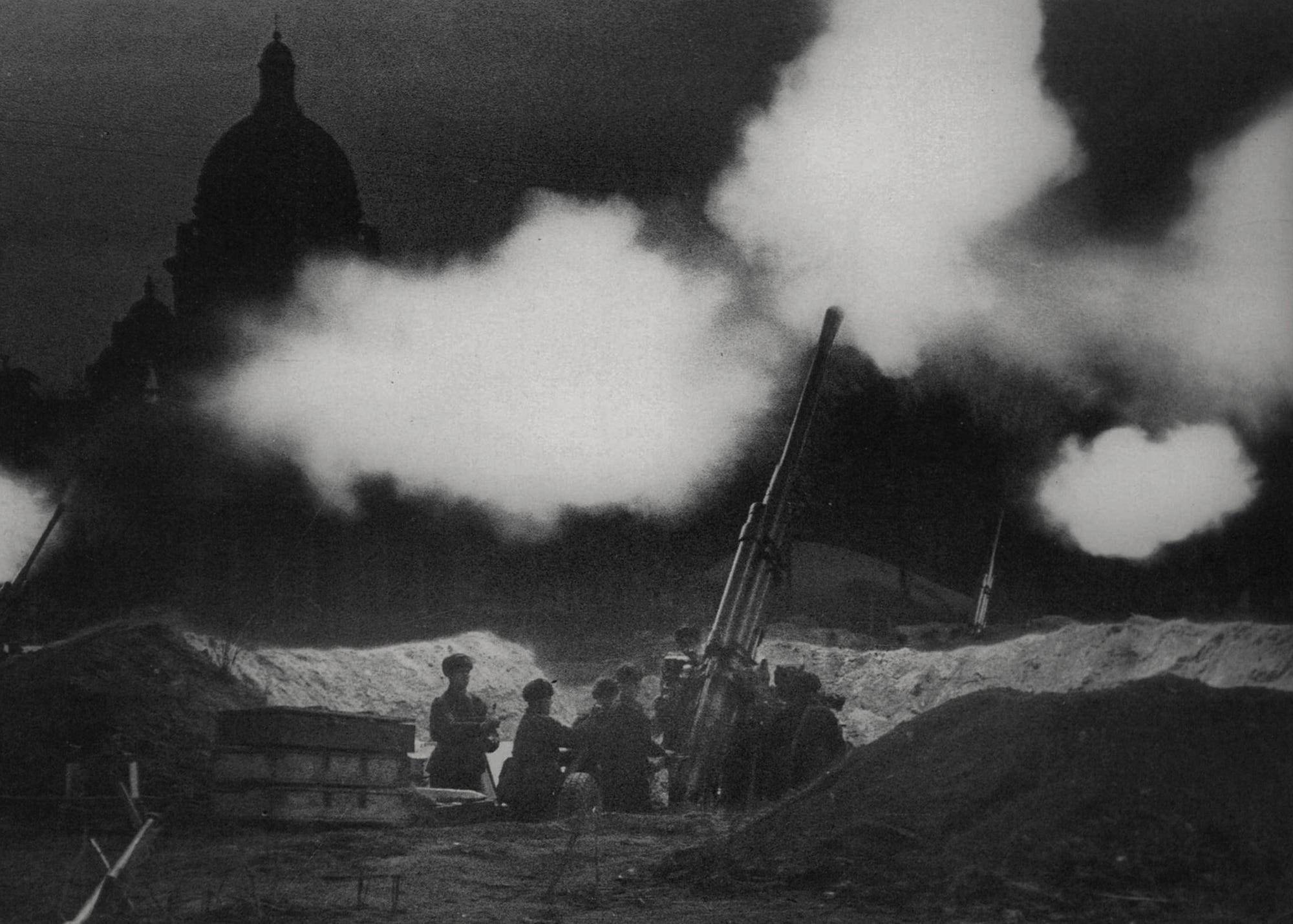
But simply capturing the city was not part of German thinking. In the context of the plan to divert huge quantities of food to the rest of Europe, it was unacceptable for the Germans for them to be left with the obligation to feed a city of over two million. From the outset, the intention was to destroy the physical structure of the city and either to kill its population or to drive them away to the east into the Russian hinterland, where they would be left to starve.
The success of the German invasion was predicated upon the expectation that the Red Army could be destroyed within 200km of the frontier. Historically, invasions of Russia had foundered in the face of the vast landscape, but the advent of motorised warfare seemed to offer the possibility of swift encirclement of Soviet armies before they could retreat into the interior.
Once the Red Army had effectively been eliminated, the Germans would be free to pursue their primary objectives – Leningrad in the north and Ukraine in the south – before turning against Moscow. But this pursuit of goals to the north and south would lead to the Wehrmacht advancing on diverging axes, and such a plan was only possible if the Red Army had been rendered too weak to intervene.
The failure of the German invasion was ultimately due to huge underestimates of the strength of the Red Army and the ability of Soviet industry to produce weaponry and munitions. Despite suffering huge losses, the Soviet armies survived and continued to resist; as they edged closer to Leningrad, the jubilant confidence of German officers in earlier weeks was replaced by a growing sense of unease. There was no sign that the enemy was close to the end of his strength.
One of the remarkable aspects of the German attack in the north is that plans for precisely how to deal with Leningrad continued to evolve even after the invasion had commenced. By the time that the siege commenced on 8 September, Hitler’s intention was to secure a tight perimeter and to leave the coming winter to destroy those trapped within Leningrad.
Hunger has been a weapon of siege warfare since time immemorial, but almost always with the intention of rendering the garrison unable to fight so that the besieging forces can attack successfully or can force a surrender.
This was a very different type of siege. Orders were issued that if the Soviet authorities in Leningrad attempted to surrender, the Germans were to reject it. Hunger was used deliberately as a means of extermination, as evidenced by detailed discussions in Germany with nutritionists to calculate how long it would take to starve the city to death.
The consequence, in combination with a bitterly cold winter in 1941-42, created suffering of almost unimaginable severity in Leningrad. German artillery and bombers struck the city repeatedly, destroying water pumping facilities and electricity generators, and the population clung to life on the hopelessly meagre daily rations they were allotted.

The ice road across Lake Ladoga – the ‘Road of Life’ as it became known – was the only major route by which supplies could be brought into the city, and the trickle of food was barely sufficient. Tens of thousands starved to death; yet throughout the winter, aircraft brought in supplies of fruit, meat and alcohol for the Communist Party elite.
As the winter came to an end, rations were slowly increased, but barely reached the level required to prevent further weight loss and malnutrition. The Blokadniki, those who endured that terrible winter, would be weakened by their ordeal for many months more.
Throughout the siege, the Red Army made repeated attempts to break the siege ring at a huge cost. More Soviet citizens, military and civilian, died in Leningrad and in the attempts to lift the siege than British Empire war dead from both World Wars combined. The endurance of the people of Leningrad became one of the great stories of the war, both in the Soviet Union and across the entire world •
"This was a very different type of siege. Orders were issued that if the Soviet authorities in Leningrad attempted to surrender, the Germans were to reject it."
Distorted Memories
But like so many great stories, the tale of the Siege of Leningrad is often distorted. German accounts often highlight the failure to overrun the city in late 1941, when the Red Army was at its weakest and German forces were still moving forward. One more effort, many officers and men later wrote, would have given the German armies their prize.
But few if any of these accounts consider the consequences of advancing into the city. By the end of 1941, German infantry units across the entire Eastern Front were far below full strength. It is questionable whether those that closed in on Leningrad would have had sufficient resources to conduct the sort of brutal house-to-house fighting that was such a feature of the battle for Stalingrad in 1942.
Nor do any of the German accounts consider what would have happened to the city’s residents, who would either have been driven away into the swamps and forests of northern Russia or – if they were identified as Jews, Communists, or other ‘undesirables’ – shot immediately.

Soviet accounts of the siege are also distorted. Post-war orthodox Soviet historiography portrayed the great victory over Nazism as being due to the strength of the Communist system, led by the infallible Stalin. To acknowledge the worst moments of the siege would have undermined this narrative; some aspects, such as outbreaks of cannibalism, were taboo subjects until the end of the Soviet Union. The great endurance of Leningrad was of course acknowledged, but only as part of the overall Soviet triumph.
Those who live in the city created by Peter the Great as a ‘window on the west’ have always regarded themselves as different from the rest of Russia. Indeed, this sense of difference accounts for much of Stalin’s distrust of Leningrad.
But the unique horror and tragedy of the siege, and the superhuman endurance required to survive it, marked both Leningrad and its people, reinforcing their sense of being different, despite every attempt of Stalin and others to play down any such uniqueness.
Writing about the siege that she and others endured, the poet Olga Berggolts summed it up the reasons they had prevailed: she concluded her poem with the words ‘We are Leningraders’. For those who lived in the city, both at the time and after, no other explanation was required •
This feature was originally published September 2023.
Prit Buttar studied medicine at Oxford and London before joining the British Army as a doctor. After leaving the army, he worked as a GP, first near Bristol and then in Abingdon, Oxfordshire. An established expert on the Eastern Front in 20th-century military history, his previous books include a definitive four-part series on the Eastern Front in World War I which concluded with The Splintered Empires: The Eastern Front 1917-21 (2017). He now lives in Kirkcudbright in Scotland.
Unseen Histories relies on your patronage to operate. You can support us by purchasing a book via the links, from which we will receive a small commission. Thank you for your support.
To Besiege a City: Leningrad 1941–42
Osprey, 14 September, 2023
RRP: £30 | 464 pages | ISBN: 978-1472856555
“[An] excellent account”
– Richard Overy, The Telegraph
A ground-breaking history of one of the greatest ever sieges. Masterfully brought to life by a leading expert using original Russian and German source material.
This new history of the first two years of this crucial battle for the heart and soul of Russia is the first in over a decade and also the first to look comprehensively at the wider military strategies of both sides.
At a huge cost, the Red Army and the civilian population of Leningrad ultimately endured a bitter 900-day siege, struggling against constant bombing, shelling, and starvation. Throughout the siege, Soviet forces tried to break the German lines and restore contact with the garrison. To Besiege a City charts the first of these offensives which began in January 1942 and was followed by repeated assaults. Acclaimed Eastern Front historian Prit Buttar details how although the Red Army suffered huge casualties in the swampy and forested terrain, the German infantry divisions were also steadily eroded. Indeed, by keeping control of parts of the shores of Lake Ladoga, the Soviet Union was able to sustain Leningrad through the winters of the siege via the ‘road of life’, constructed across the frozen lake. This epic history details the dramatic race to create the road across the ice and first-hand accounts from both Soviet and German soldiers, many never previously translated, bring the horrific series of battles and assaults to life.
Ultimately the determination of the defenders to hold out during this first phase of the siege and the desperate attempts to break it became a hugely significant part of Russian wartime history. The echoes of the battle persist to this day helping to define both a country and its politics. There is no better time to fully understand this history and To Besiege a City is the most comprehensive account to date.
Shortlisted for the Military History Matters Book of the Year Award 2024.
Further Reading
Prit Buttar: There are many books about the siege, but for a concise account, I strongly recommend ⇲ Leningrad: State of Siege (John Murray Press, 2009) by Michael Jones.
For a unique picture of the tribulations of Shostakovich, ⇲ Symphony for the City of the Dead: Dmitry Shostakovich and the Siege of Leningrad (Candlewick Press, 2017) is a fascinating window into the persecution of intellectuals by Stalin and the extraordinary importance of the creation of the symphony.
⇲ Writing the Siege of Leningrad: Women’s Diaries, Memoirs and Documentary Prose (University of Pittsburgh Press, 2005) by Cynthia Simmons and Nina Perlina is a rich source of information about the human experience of the siege by ordinary people.
Related
Interview: To Besiege a City
After the lightning launch of Operation Barbarossa in June 1941 the German forces made swift territorial advances to the east. On their northern flank, by the end of the summer, they were approaching the city of Leningrad. The place known to us today as Saint Petersburg had long been considered uniquely special by the Russians. But by September 1941 it was fully encircled and its surrender seemed inevitable.
Prit Buttar, author of a book on the horrifying siege that followed, tells us more.
With thanks to Elle Chilvers at Bloomsbury.
You can read all our long-form features, here.
Subscribe to Unseen Histories for the very best new history books, read author interviews and long-form pieces by the world’s leading historians.







